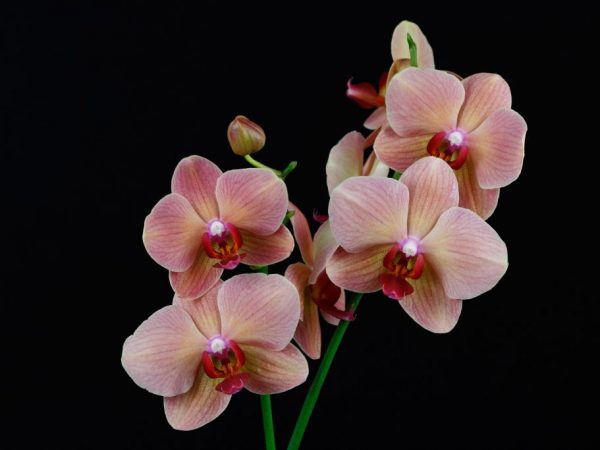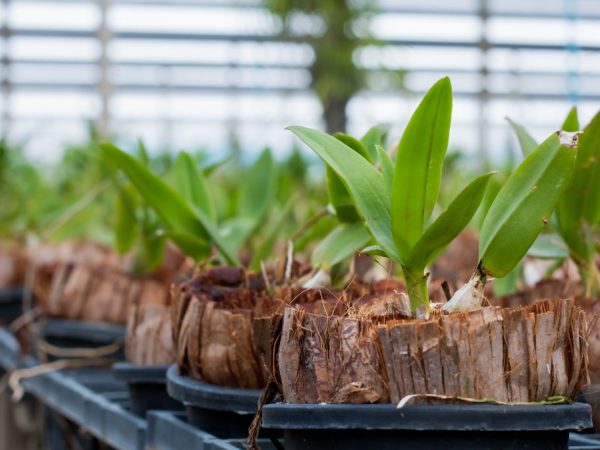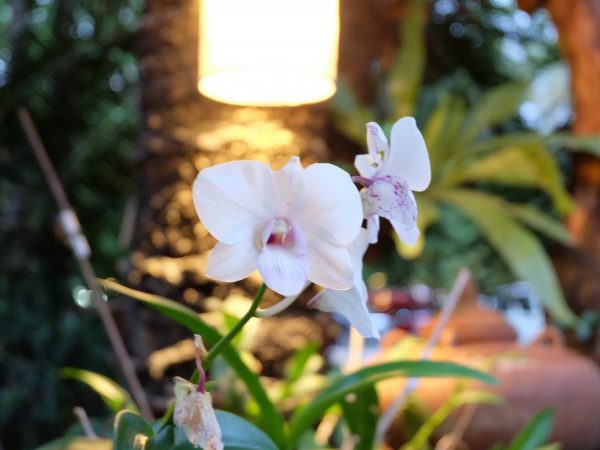Creating additional lighting for the orchid
Lighting for an orchid is an indispensable source of energy for the growth and flowering of an indoor flower, especially when it is located on the shaded side of the room.

Creating additional lighting for the orchid
The need for lighting
The need for additional lighting for orchids at home is due to the process of photosynthesis occurring due to the absorption of light in the foliage. Throughout the day, a flower from the full spectrum absorbs long red and short blue waves. The flower absorbs blue waves almost a full day, and red ones are needed only in the morning and evening hours. It is difficult to achieve such lighting at home in a poorly lit room or with a reduced daylight hours in winter. Additional lighting is performed with phytolamps.
Red light waves are necessary for the orchid for flowering, blue for the growth of green mass. The combined absorption of both light waves ensures the full development of the plant.
Different types of orchids require light of different intensity:
- the most light-loving plants with narrow foliage, having a cylindrical or xiphoid shape,
- less demanding for light with pseudobulbs and thick leathery foliage.
Insufficient illumination leads to a lack of flowering and a change in the appearance of foliage: it acquires a bluish tint, becomes soft and withers. Excessive lighting also adversely affects the flower, due to excess energy it leads to overheating and death.

Full spectrum flower absorbs long red and short blue waves
With an abundance of red light, the flowering will be lush, but the peduncles will grow weak. An overabundance of the blue spectrum increases the green mass and is an obstacle to the appearance of flowers.
With correctly created additional lighting, the flower is actively increasing the leaf mass and the flowering process is enhanced. Additional lighting in the winter season prevents the orchid from falling into a dormant state and gives an impetus to prolong the formation of flowers.
Backlight period and time
Most flowers in the orchid family are provided with additional lighting between October and March. The rest of the time, the plants have enough natural light, however, when placing a potted container with a flower on a windowsill with windows facing the north side, additional lighting with lamps is carried out year-round.
The total duration of daylight hours for orchids should be at least 10 and no more than 12-14 hours.
In the spring and throughout early autumn, phytolamps as additional lighting are turned on only in the evening and in cloudy weather.
Orchid lamps
Designed specifically for floriculture, lamps for orchids are designed in such a way that during the supplementary lighting process, the optimal conditions for the radiation intensity and the wavelength of light required by the plant are provided.
When growing orchids with phytolamps, both light spectra (red and blue) are illuminated, so you should choose 2 separate lighting devices or highlight them with a combined one. When using separate lamps, blue supplementary lighting is turned on for the day, red - at twilight.
It is recommended to use one of the following lamps.
Energy saving
Energy saving LED lamps are available in blue and red spectrum. They process only up to 20% of the energy emitted by electrical appliances into heat rays, which makes it possible to place them close to foliage. The minimum distance between the lamp and the plant is 3 cm.
Luminescent
Fluorescent lamps produce ultraviolet light that is visible to the naked eye, thanks to a phosphor coating on the surface. For supplementary lighting of orchids, it is recommended to use lamps with radiation shades of 33 and 840. The optimal distance between the plant and the device is 25-30 cm.

Orchid lamps provide optimal radiation intensity conditions
Metal halide
Metal halide discharge lamps are available in a number of models designed specifically for indoor plant illumination. Power - from 100 to 600 watts.
Mercury
The principle of operation of mercury electrical appliances is similar to fluorescent ones. The optimum color temperature for orchids is 3200-4200 K.
LED
LED bulbs are considered to be the best option for use as a backlight for indoor plants.
LED
The assortment of LED-type phytolamps is the optimal option for floriculture, allowing you to choose combined models that combine both spectra (red and blue) in different ratios: 8 to 1 or 5 to 1.
Conclusion
In the process of growing orchids at home, flowers need additional lighting. The plant is provided with a sufficient amount of light with the help of lighting devices - special phytolamps that emit red and blue spectra of light waves.


